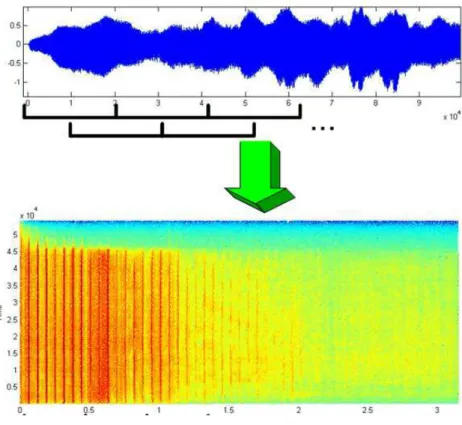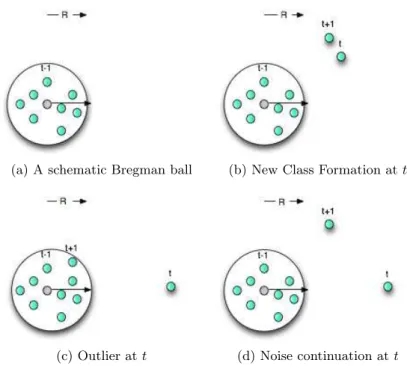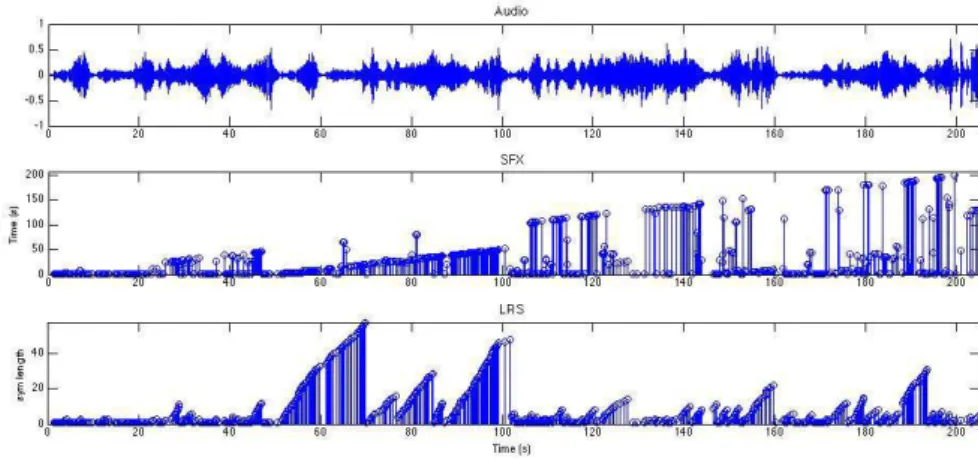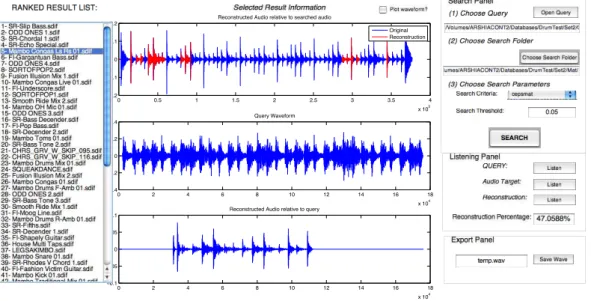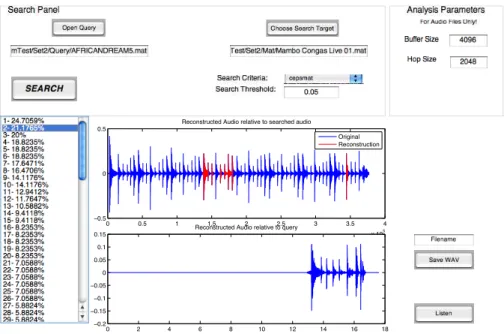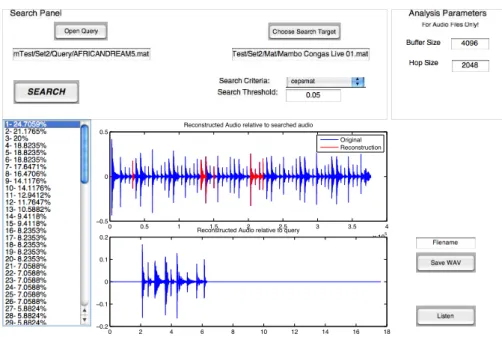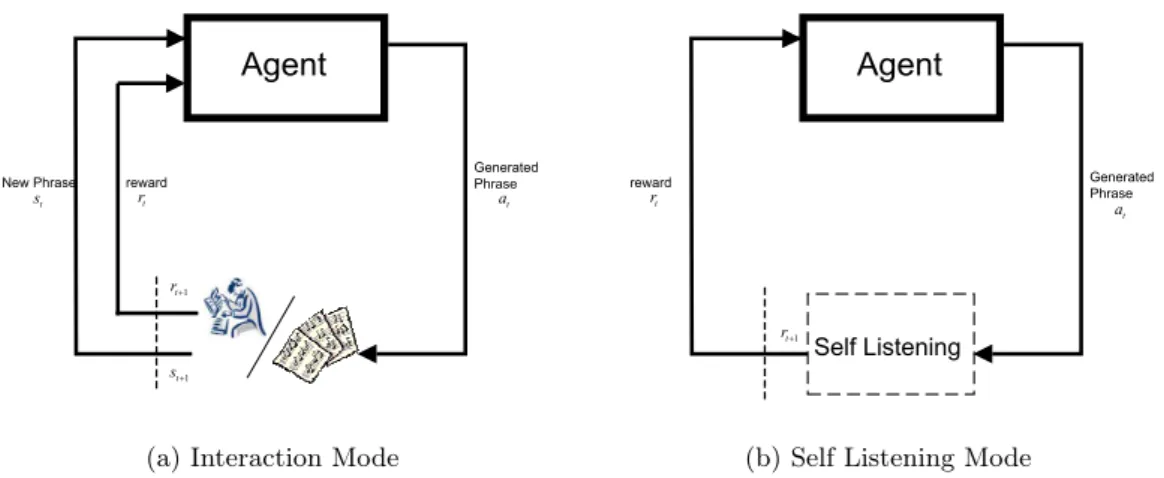Before starting this PhD program, I was desperately looking for ways to connect my research to the world of contemporary music. One of the main goals of this dissertation is to provide computational answers to Grisey's reasons inspired by musical cognition research, with the strong goal of approaching the level of access to the skin of time for musical and artistic purposes; i.e. the transition from the time of music to the music of time.
Approach
To this end, by "time of music" we define parameters and models useful for describing the temporal flow of music, and by "music of time" we mean a more active and creative process by which temporal structure is exploited for effect. musical. This thesis in its beginnings brought the idea to study the processes of reception in action and to provide computational frameworks within which it could find life in computer systems of sound and music, whether for analysis, information processing or generation;.
Organization
This theoretical framework provides access to musical information and paves the way for two concrete algorithms introduced in chapter 5 titled methods of information access. The implementation of the system proposed in Chapter 8, called Antescofo, has been used in contemporary computer music productions at IRCAM and has performed worldwide.
Contributions
- Experimental Research Scopes
- Auditory Learning
- Concurrent and Competitive Representations
- Mental Representations of Expectation
This path corresponds to the third repetition of the theme (with variations) at the beginning of the anticipation of the sonata form. All of the systems reviewed in the previous section are based on predictions outside of a learned context.
Anticipation Defined
Anticipation in view of Expectation
From a biological perspective, the purpose of expectation is to prepare an organism for the future. From a phenomenological perspective, the most interesting property of expectation is that it evokes feelings and emotions.
Anticipation in view of Enaction
Anticipation in view of Computation
Models of Musical Expectation
Music Theoretic Models
Top-down processes incorporate experience as well as the particular history of the piece as it is heard. Since Margulis' model is a recent result of the culmination of two (and more) sources of literature regarding expectation models in a music-theoretical sense, we describe an overview of the model for better understanding of our position on modeling expectation and expectation.

Automatic Learning Models
Furthermore, their use of sequential neural networks provides a means of implicitly modeling and visualizing the influence of several parameters on others (in this particular case, metrical inference and functional tonal harmony).
Information Theoretic Models
For example, a surprise-based measure can be taken as the negative log-likelihood of the present X =x given its past Z =z or L(x|z),−logpX|Z(x|z) . Despite the simple approach, the framework in (Abdallah and Plumbley, 2007) suffers from a strong a priori assumption of the shape of the transition matrix and its evolution (a Dirichlet process without choice estimation).
Modeling Investigations
Imperfect Heuristics and Naive Realism
The striking fact of this result is that Palestrina is responsible for promoting the idea of post-skip reversal in the counterpoint literature. These repercussions of naïve realism are at the heart of Lerdahl's analysis and conclusions.
Over-intellectualization of the intellect
50s, 100s] is an exact repetition of the sonata's theme as indicated in the score by Beethoven. In this section, we evaluate the performance of the system against synthesized sound from a given score.
Scientific pluralism
Summary
A purely reactive worldview is subject to the same naïve realism discussed in section 2.4.1 between the representation of things and the things themselves. Following our active view of cognition (Section 2.2.2), we refuse to separate the internal representation of the system from the environment itself.
General Modeling Framework
Markov Decision Process Framework
Actions can be low-level controls, such as time divisions of a musical event (Part IV), or high-level decisions, such as generating musical phrases (Part III). States of the system can be determined by low-level sensations from the environment, such as continuous real-time audio observations for a guidance system (Part IV), or they can be high-level, such as symbolic descriptions of music in an improvisation system (Part III ).).
Interactive Learning in an Environment
In this case the environment is characterized by arbitrary probabilities (also called transition probabilities) P(s, s′, a) and expected rewards R(s, s′, a), for each possible transition from a state to a next state s′ given an action a. For example, in MDPs the dynamics of the environment are assumed stationary and Markov, which limits applications to complex problems such as modeling musical interactions.
Distinctions of Anticipatory Behavior
- Implicit Anticipation
- Payoff Anticipation
- Sensorial Anticipation
- State Anticipation
Therefore, in implicit anticipatory behavior there is no explicit knowledge of possible future states, but it is anticipatory in the sense that the behavioral architecture is predicted to be effective. This anticipatory behavior is strongly related to preparatory attention in psychology and results in a predisposition for processing sensory input.
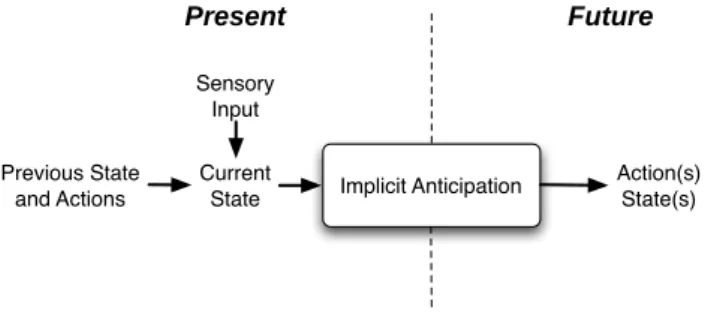
Learning Approaches
Reinforcement Learning
An ideal post-application result should essentially master the grammar used in the musical score under consideration. Both systems start at each file in the database using the initial rate of the given results.
Learning Classifier Systems
Modeling Implications
Information as Available
More importantly, it forms a special style of system access to the world and in our case takes the form of representations of the outside world. By analogy with computational modeling, in the absence of accurate representations, the perception of the system is assessed by access to the information controlled by patterns of expectancy dependence.
Interactive and on-line Learning
To take this matter to an extreme, achieving expectation or anticipation is not a matter of dividing attention over information, and not a matter of attention at all. With this respect, we dedicate Part II of this thesis, and the beginning of our design exploration, to the problem of encoding and representing musical information with a strong emphasis on the problem of information accessibility governed by expectation patterns.
Multimodal Interaction and Modeling
In this chapter, we draw a framework for addressing a third aspect of information processing in relation to a musical signal: the affective aspect of information as the effectiveness of musical information as it unfolds over time. On another basis, one of the main goals of musical information retrieval (MIR) systems is to identify musical information based on its similarity structures.
Preliminaries
- Information Geometry of Statistical Structures
- Elements of Bregman Geometry
- Exponential Family of Distributions
- Bregman Geometry and Exponential distributions
The following theorem states significantly that the right-type centroid of a set of pointsX ={xi}ni=1 is independent of the choice of Bregman divergence. The problem of finding the maximum likelihood on natural parameter space is equivalent to the right-type centroid following from theorem 4.1, and therefore equal to the sample mean and independent of the choice of Bregman divergence.
Music Information Geometry
Methodology
In general, if qi is the projection from ron to the simplex of p (denoted here as X), the rightmost term above becomes negative and we get the triangle inequality1. To begin our study, we adopt Dubnov's distinction between (Dubnov, 2008) Data Information Rate and Model Information Rate, the former assuming a particular model about the signal and the latter situating the ongoing signal in relation to other models in the learned model space.
Data IR
Without loss of generality, we choose the front of the representation as a representation of the Constant-Q power spectrum of the audio signal scaled to a logarithmic musical scale (corresponding roughly to the notes on a piano) for St(ω) (Purwins et al. , 2001). The last equation above is simply the measure of the spectral flatness of the power spectrum for the data samples framed as in equation 2.1 and is thus directly equivalent to Data-IR as presented in (Dubnov, August 2004).
Model IR
From Divergence to Similarity Metric
Symmetrized Bregman Divergences
Nielsen and Nock (2007) showed that this optimization problem can be simplified to a constant-size system relying on the center of the right and left types defined earlier. For our framework, we adopt the geodesic walk algorithm of Nielsen and Nock (2007) to solve the optimal symmetric Bregman sphere, thus extending our previously defined methodology to symmetric Bregman divergences.
Triangle Inequality
Incremental Model Formations
It is also consistent with the intuitive nature of musical information, which is often characterized by discrete events with an information onset that suggests a discontinuity with respect to the past. Figures 4.2c and 4.2d respectively correspond to the left and right groups in equation 4.17 and represent two non-events such as outliers and noise continuation.
Discussions
- Related Works
- Audio Oracle Data Structure
- Audio Oracle Learning and Construction
- Sample Results
- Discussions
Each state of the Audio Oracle would then reference a Bregman ball for Model AO or individual vector points for the Data AO. Given a learned Audio Oracle structure of a music data stream, the suffixes would reveal the repeating structure of the current signal and their corresponding longest repeating sequence length oflrs.

Guidage: Fast Query-Based Information Retrieval
- Research Scope
- Related Works
- General Framework
- Search Domain and Meta Data
- Guidage Algorithm
- Resynthesis
- Sample Applications and Results
- Discussions
Continuity is ensured by following the structural similarities and spectral morphologies of the target Audio Oracle. GUIDAGE: FAST QUERY-BASED INFORMATION RETRIEVAL 81 the audio query as the first theme in the same piece.

Introduction
These considerations led us to the definition of anticipatory systems in Section 3.1, after which we studied adaptive learning frameworks, different modeling approaches to anticipatory design and learning, and drew the premises for anticipatory design in Section 3.5. The interactive learning framework introduced in Section 6.5 contains an active learning framework for memory-based active learning with a competitive and cooperative learning norm between agents.
Background on Stochastic Music Modeling
Memory Models
We compare different memory models used and proposed in the literature for statistical models of music outlined above. Mixed memory models are geared to situations where the combinatorial structure of the state space leads to an explosion of the number of free parameters.
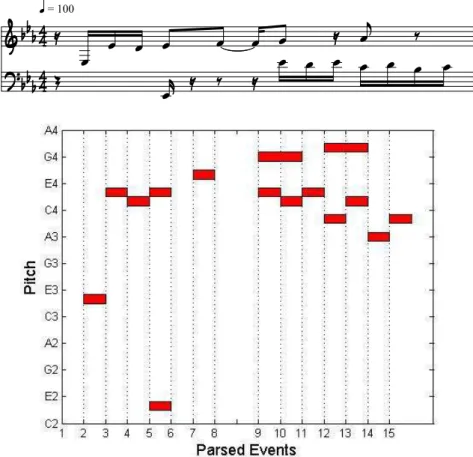
Approaches to Statistical Learning
One of the advantages of this type of modeling is the explicit consideration of long-term dependencies during learning by combining perspective predictions for both long-term and short-term models (Pearce et al., 2004). Despite the explicit component representation of factor models, the Markov correlation factors φν(µ) model only one-level dependencies and do not take into account the long-term behavior essential in computer models of music.
Approaches to Planning and Interaction
In general, to account for diversity in order to exhibit creativity, a long-term planning strategy that goes beyond single-step decision-making is desired, even in the presence of strongly structured learning contexts. In a later approach to the same problem, Pearce et al. 2004) combine short- and long-term outlook forecasts to achieve a more coherent model-based sampling.
General Discussions
In our view and following Simon (1969), the complexity of a structure is not the result of the complexity of the underlying system, but due to the complexity of its environment. It is also an anticipatory system due to the selective behavior caused by the collaborative and competitive learning and generation discussed later in Section 6.5.
Active Learning Architecture
Audio Oracles for Memory Models
The representation of musical sequences in our system serves as musical memory, mental representation of musical signals, and internal models of agents. Audio oracles are independent of the nature of the input data and incremental in nature.
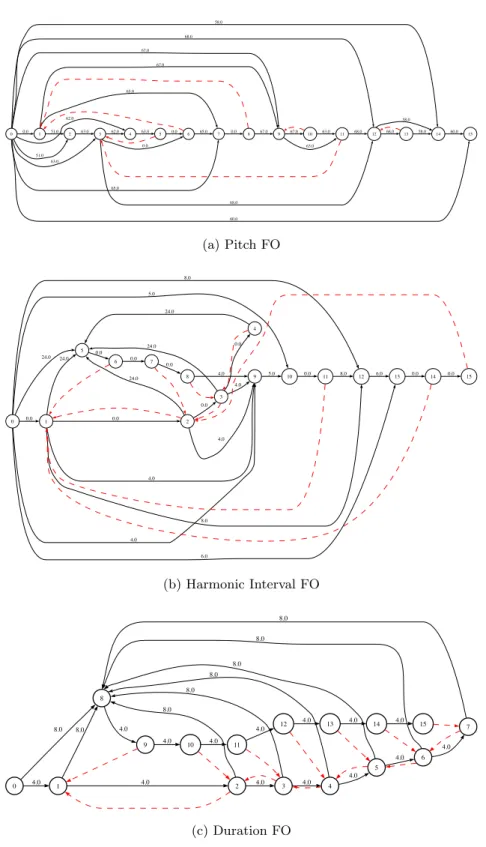
Guidage for Active Selection
Anticipatory Learning
Competitive and Collaborative learning
In this way, a behavioral policy πbehis is competitively selected at the beginning of each episode based on the value of the initial state s0 among all policies πi as demonstrated in equation 6.4. 6.5, where(sm, am) state-action pair of (s, a) in behavior policy to the oracle of attribute i.
Memory-based Learning
As before, α is the learning rate, and R(.) as defined in Eq. 6.5) This scheme defines the collaborative aspect of interactive learning. For example, during a learning period, the pitch attribute may become the Qbeh behavior policy, and throughout that episode, the system follows the simulation pitch policy, and the policies of other attributes Qi(., .) will be affected by the behavior of the pitch policy as shown in Equation 6.5 .
Active Learning Algorithm
Model Complexity
The complexity of the system depends linearly on T,nis (or the number of alphabets in each memory model) and an adaptive environment factor. This is because the arrows in the state space model are derived online and depend on the context being added to previously stored knowledge.
Results and Experiments
Knowledge-Based Interactions
In a real setting, the system's input consists of music information with multiple attributes. This pattern is actually the pitch contour of the first 6 notes of the second theme in measure 2 of the score in Figure 6.4.
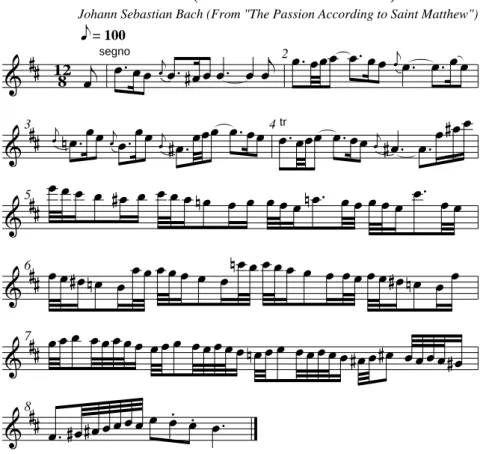
Anticipatory Style Imitation and Automatic Improvisation
While both voices follow a polyphonic structure, there are some formal musicological structures that can be observed in the resulting score. Most importantly, these elements or their variants can be found in Bach's original score.
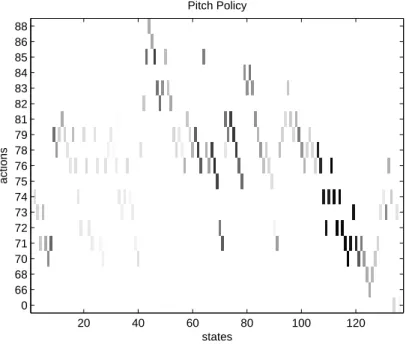
Discussions
In this chapter, we present a real-time and online audio-to-score alignment system that is also capable of decoding the live tempo (or musical tempo) of the performance. The output from the system is the event indexes and real-time pace without the need for external training.
Background
- Score Following Research
- Cognitive Foundations of Musical Time
- Compositional Foundations of Time
- Probabilistic Models of Time
The relative notion of musical time is one of the main sources of musical expressiveness which is usually guided by a tempo often represented in beats per minute (BPM). In such tasks, we are interested in a probabilistic model of macro-state duration and residence time.
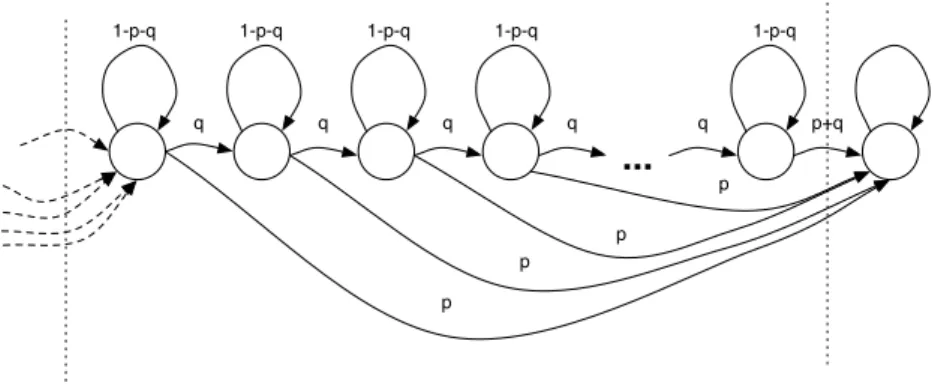
General Framework
Anticipatory Multimodal Inference
The inference framework proposed for this architecture is multimodal, taking care of continuous audio and rhythm parameters and is also predictive. The tempo agent computes on the time scale of the event and is based on a cognitive model of the musical metrical structure introduced in section 7.2.2 and provides continuous tempo predictions based on the live audio input and the given musical score.
Hybrid Models of Time
The two audio and tempo agents collaborate at all times to map real-time audio input to the most likely sequence of states in the score model. The proposed model is a sensory anticipatory system (see definition in Section 3.3.3, page 33) where the state probabilities are dynamically affected by the predicted pace, and in turn the pace agent is directly affected by the decisions the system achieves instantaneously. .
Inference Formulation
This definition of the probability of observation expresses the assumption that the execution process at time t depends only on the underlying hybrid Markov/semi-Markov chain at time t. The original formulations of the hybrid network as defined above in (Guédon, 2005) do not focus on real-time decoding, anticipation or multimodal processing.
Stochastic model of time in music performance
Attentional Model of Tempo
The attention pulse can be modeled using a periodic probability density function, the von Mises distribution which is the circle map version of the Gaussian distribution, as depicted below, where I0 is a modified Bessel function of first kind and order zero. Large and Jones (1999) show that the corresponding phase coupling function (rate correction factor) for this attention pulse is the derivative of a unit amplitude version of the attention function, depicted in equation 7.9.
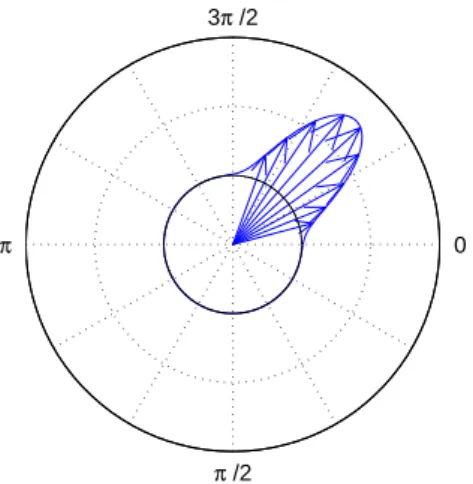
Tempo Agent and Decoding
Phase coupling alone is not sufficient to model phase synchronization in the presence of the complex temporal fluctuations. Note, however, that the phase time regions where the phase adjustment is most efficient in Figure 7.4 are identical to the region around the mean of the attention distribution (Eq. 7.8) spanned by its variance κ.
Survival Distribution Model
The prediction step then simply uses the newly corrected phase position of eventnorφn, the phase position of the result φˆn, and the correction factors to obtain a new tempo prediction for eventn+1. We use this function of our model in the next section to obtain the survival function needed for the inference module.
Music Score Model
Basic Events
If the duration associated with a single event is set to 0.0, it indicates that the associated event is temporal and therefore Markovian and is described by {i, obsi}. In this example, pitches are encoded using MIDI pitch numbers, creating a left-right Markov topology that is in one-to-one correspondence with the score.
Special timed events
A fixed-time event is mapped to the semi-Markov state, while a temporal event (such as a grace note) is mapped to a Markov state. In this new topology, a high-level semi-Markov state represents the overall temporal structure of the entire object that is mapped into a series of successive left-right Markov chains.
Observation Model
So the goal here is to compute the conditional probabilities ap(xt|sj) where each state sj gives the expected heights in the outcome. To construct the "true" frequency distributions of pitches insj, we assume that a pitch consists of a fundamental and several harmonics that represent themselves as peaks in the frequency domain.
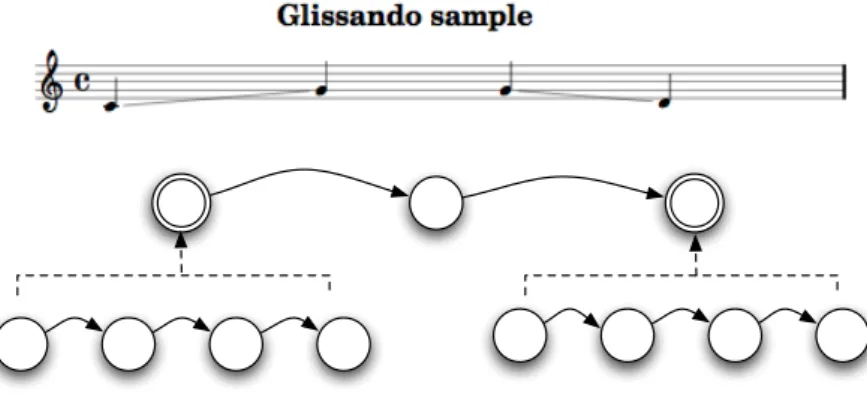
Evaluation
Evaluation of Tempo Prediction
For the actual experiment, we simulate both systems in real time, where it is supposed to predict the arrival time and pace of the next event. Total error statistics are shown in terms of mean and standard deviation (in seconds).

Evaluation over synthesized audio from score
The results are demonstrated in Figure 7.10, where Figure 7.10a shows the synthesized waveform with the alignment results, where each number mark refers to one of the 30 notes in the score in Figure 7.9. The estimation errors here are the average of all events in the score (a total of 30 in each case).
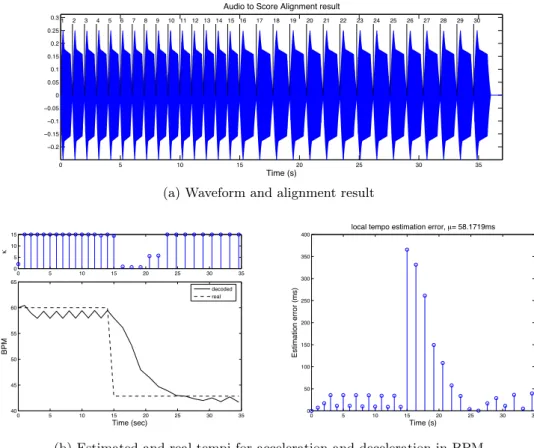
Evaluation of real-time Alignment
A partial goal here is to demonstrate the performance of the system despite the lack of time to reach an equilibrium state, as was the case in the previous experiment. Second, note that although γ only changes sign in the two cases, the estimation results and mean errors are quite different.

Discussions
Throughout its short history, computer music trends have always been driven by the culmination of mutual research and artistic endeavors. Based on observations in previous chapters, we introduce a tentative framework for writing time and interaction in live computer music called Antescofo.
Background
- Computer Music Language Paradigms
- Practical Status
- Compositional Status
- Research Status
On the user side, and despite the more active role of composers at the beginning of this field, computer music artists have been quicker to grab ideas in real time and adapt them to their needs. As before, we focus on the technical details of the release for notated live mixed instrumental and electronic tracks.
Antescofo: A preliminary tool for writing of time and interaction
Motivations
General Architecture
Antescofois is basically an implementation of the anticipatory synchronization of chapter 7, where the concept of observation has been expanded and time structures made explicitly available for writing time and interaction.
Antescofo: A modular and concurrent synchronizer
The number of simultaneous observations in the system (which are defined by the user and calculated outside Antescofo) and their code names are defined by the user when instantiating the object in Max or Pd. ANTESCOFO POSITIONING SEMANTICS 167By assigning simultaneous observations, the user tells the system that.
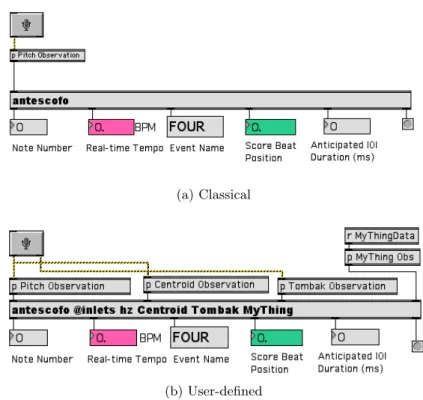
Antescofo’s Score Semantics
Event Declarations
In terms of modeling, Antescofo's TRILL is an in-time event that has several out-of-time events within it. This new addition to Antescofo's score syntax allows the decoding of continuous time events such as glissandis (in western notation).
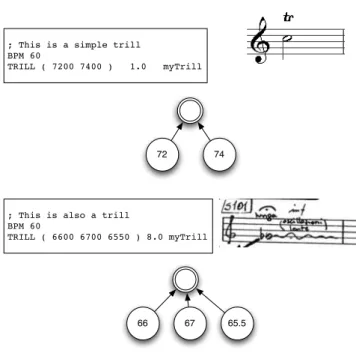
Control Commands
An increase in observer variance in such a case can save the system and performance. In many cases, the time course of events during a live performance is not relevant, regardless of the temporality of the events at the time of writing.
Action Declarations
This can be achieved by sequentially using TEMPO ON and TEMPO OFF between the commands in the result, which determines the real-time operation of the system within a given region. This simply means that the period of the message loop would change accordingly with the tempo of the musician(s).
From the Time of Composition to the Time of Performance in Antescofo 173
- Augmenting the Semantics of Interaction
- Multimodal Coordination
- Intuitive Interfaces
- Relating to the Community
Antescofo's language semantics is basic and new, but it can still copy many computer music pieces that have been made in recent years. The Antescofo project was born and implemented with the sole idea of adding to the current vocabulary of real-time computer music environments at the request of composers and artists active in this field.
Outlook
Bregman Divergence Symmetrization
Geodesic-walk Algorithm for Multinomial Manifolds
Raphael’s Tempo Inference Model
Implicit anticipatory behavior architecture
Payoff anticipatory behavior architecture
Sensorial anticipatory behavior architecture
State anticipatory behavior architecture
Signal Processing front-end
Incremental class formation schematic diagrams
Incremental segmentation results for Beethoven’s Piano Sonata Nr.1 . 60
The Suffix structure and Suffix Link forest of disjoint trees
Audio Oracle sample for Beethoven’s Piano Sonata Nr.1-Mv.1
Audio Oracle sample for Beethoven’s Piano Sonata Nr.1-Mv.3
Data Audio Oracle Sample on Bird Utterances
Audio Oracle Parent/Children structure
Model-Guidage sample results
GUI for Audio Query over an Audio Database
Data Guidage sample result on music database
Data Guidage sample result on speech database
Data Guidage GUI for mico audio query (1)
Data Guidage GUI for mico audio query (2)
Toy Example for comparing musical representation approaches
Active Learning’s Modes of Interaction diagrams
Parallel Factor Oracle representational schemes over the Toy Example 104
Knowledge-Based Interaction: Pitch contour pattern
Learned policy visualization for Experiment 1
Generation of 100 events after Experiment No.1
Knowledge-Based Interaction: Rhythmic pattern
Learned policy visualization for Experiment 2
Generation of 100 events after Experiment No.2
Style imitation sample result
Improvisation Space vs. Original Space
Parametric Markov Topology
General System Diagram
Sample Von Mises Distribution on a sine-circle map
Phase Correction Function for Tempo Modeling
Sample state-space topology for basic events
State-space topology for the TRILL class
State-space topology for the MULTI class
Subjective Results for Tempo Prediction Evaluation
Sample score 1 for tempo experiment
Tempo Decoding Evaluation using synthesized score and controlled
Tempo Decoding Evaluation using synthesized score and discretely con-
Tempo Decoding Evaluation using synthesized score and continuously
Antescofo’s general system diagram
Antescofo’s Help snapshot in Max/MSP
Modular Observation in Antescofo
Antescofo’s single event score sample and state transition diagram
Antescofo’s TRILL class score sample and state transition diagram
Antescofo’s MULTI class score sample and state transition diagram
Summary of Margulis (2005) Melodic Expectation Model
Musical attribute parsing toy example
Dataset Description used for Tempo Prediction Evaluation
Tempo Prediction Evaluation Results: Error statistics
Tempo Decoding Evaluation
Evaluation Database Description
Real-time Alignment Evaluation Results
Summary of Multinomial Manifold Properties
